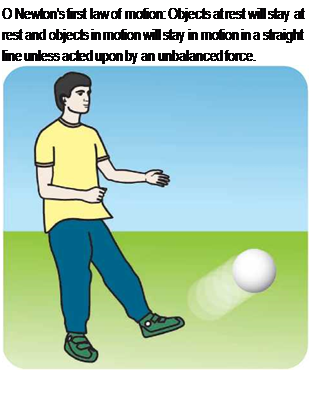Laws of Motion
|
T |
he great English scientist Sir Isaac Newton (1642-1727) studied the way objects move when forces act on them. His work resulted in three laws of motion that scientists still use today.
On July 5, 1687, three volumes of work by Sir Isaac Newton were published. The three books were written in Latin, the language of science at that time. Their title is Philosophiae Naturalis Principia Mathematica, which means Mathematical Principles of Natural Philosophy. Natural philosophy was the name in Newton’s time for the science we call physics today. This work is so famous that it is usually simply called the Principia (the Principles).
The three volumes contain details of Newton’s three laws of motion and his law of gravitation. These laws explained and described how all sorts of objects move, even planets. Today, more than 300 years later, Newton’s laws of motion can be used to calculate how aircraft and spacecraft move.
First Law
Newton’s first law of motion says that an object at rest stays at rest, and a moving object moves at a steady speed in a straight line, unless it is acted upon by a force. This is another way of saying that an object does not start moving (or does not change the way it moves) all by itself. If it does start to accelerate, a force must be acting on it. To scientists, the word accelerate does not just mean speed up. It can mean to go faster or slower or to change direction.
An example of Newton’s first law is when an aircraft’s engine power is increased and the extra thrust makes the aircraft accelerate. When a rocket engine fires and a rocket rises off the launch pad, this is Newton’s first law in action as well. The tendency of an object to stay as it is (at rest or moving steadily) unless a force acts on it is known as inertia. Newton’s first law of motion is sometimes called the law of inertia. Inertia increases with

 |
mass. This means that the more mass an object has, the greater the force that is needed to start it moving or stop it again.










